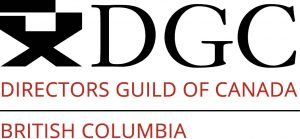 As promised to the attendees, here is the outline for the seminar I presented to the Director’s Guild of Canada last Sunday in Vancouver.
As promised to the attendees, here is the outline for the seminar I presented to the Director’s Guild of Canada last Sunday in Vancouver.
It was a spectacular session with a packed house of really eager creative industry people, looking for ways to break through creative block, inject life into their stories, and find and fix elusive narrative problems.
Judging by the response, they found what they were looking for.
Thanks again to the DGC for their invitation, to Roy Hayter who initiated the concept and sheparded it through, and to Barbara Ann Schoemaker (BA) who anticipated and handled every detail to not only make the seminar a huge success, but to make my experience both incredible and indelibly memorable. Good people, one and all!
So, here’s the seminar outline for reference, which of course does not contain any of the graphics, animations, numerous video clips or my rambling commentary.
Narrative for Movies & Television Seminar
Fix it in the Script – NOT in Post!
Welcome!
Introduction
Seminar Overview
Morning Session
Identify common serious narrative flaws
Techniques to repair flawed narratives
Afternoon Session
Story Development Techniques
Application of Structure to the Creative Process
What is Narrative?
Origin of Narrative
Generations of Storytellers
Trial And Error
Conventions of Storytelling
Patterns of Dramatics
The Concept of Narrative
Models of Narrative
Aristotle and the 3 Act structure
Jung and the collective unconscious
Campbell and the Hero’s Journey
Each had exceptions; Each was a formula
Each showed only a glimpse of the elusive structure
A New Model of Narrative
Structure is Non-Linear
The Story Mind
Teaser
“You and I are both alike”
What’s Happening!!!
Narrative is happening
These are the kinds of dramatic elements that make up narrative.
If a narrative doesn’t have all the important elements, it will fail
Let’s learn how to recognize and repair flawed narrative elements…
Narrative Problems with Characters
The most common narrative missteps regarding characters, and how to fix them.
The Main Characterv& Influence Character
The passionate core of your story’s message
Main & Influence Characters
So who ARE these guys?
Main Character represents a paradigm of belief.
Influence Character represents an opposing view.
Between them is your story’s passionate argument.
The result of this argument is your story’s message.
To Kill A Mockingbird
4 Principal Characters
Main Character
First Person Experience for Audience
Influence Character
An alternative life view
Protagonist
Prime mover of the effort to achieve the goal
Antagonist
Diametrically opposed to Protagonist achieving the goal
Head Line & Heart Line
Heroes and Villains
The Hero
Protagonist
Main Character
Central Character
Good Guy
The Villain
Antagonist
Influence Character
Second Most Central Character
Bad Guy
Hero and Villain Swap
Anti-Heroes
Anti-Villains
Melodrama
Head line AND heart line between same characters
Power of storytelling masks gaps in arguments
Arguments are incomplete
Conclusions not supported
The Dramatic Triangle
Can fully separate as in To Kill A Mockingbird
Can hinge on one character and split the lines
Most common variation (the love interest)
Other variations
The Heart Line
Main Character Resolve
The Main Character doesn’t have to change to grow
He or she can grow in their resolve
The influence character pressure the MC to change
Key establishing points to reference later.
Change Characters
Establish a belief system
Establish illustrations of belief
Announce resolve
Verify resolve
Steadfast Characters
Establish belief system
Establish illustrations of belief
Announce resolve
Verify resolve
One Must Change
Main or Influence will convince the other to change
Change occurs at character climax
Success in logistic goal hinges on who changes
Message determined by results of change
A Changing Influence Character
Character Arc
Character Arc 101
The Steady Freddy
The Griever
The Weaver
The Waffler
The Exception Maker
The Backslider
How Change Happens
The Head Line
Archetypes
Origins of Archetypes
Each of us has the same complement of basic traits
We use them to solve our personal problems
When we join in a group, we quickly self-organize
As specialists, the group gains depth and focus
The 8 Archetypes
Protagonist
Initiative
Antagonist
Reticence
Reason
Intellect
Emotion
Passion
Guardian
Prudence
Contagonist
Expediency
Sidekick
Confidence
Skeptic
Doubt
External / Internal
Protagonist
Pursuit/Consider
Antagonist
Prevent/Reconsider
Reason
Logic/Control
Emotion
Feeling/Uncontrolled
Guardian
Help/Conscience
Contagonist
Hinder/Temptation
Sidekick
Support/Faith
Skeptic
Oppose/Disbelief
Star Wars Archetypes
Protagonist
Luke Skywalker
Antagonist
The Empire
Reason
Princess Leia
Emotion
Chewbacca
Guardian
Obi Wan Kenobi
Contagonist
Darth Vader
Sidekick
R2D2 & C3PO
Skeptic
Han Solo
Oz Archetypes
Protagonist
Dorothy
Antagonist
Wicked Witch
Reason
Scarecrow
Emotion
Tin Man
Guardian
Glinda
Contagonist
Wizard
Sidekick
Toto
Skeptic
Lion
Oz vs. Star Wars
Leia- Reason
Logic
Control
Scarecrow- Reason
Logic
Uncontrolled
Oz vs. Star Wars
Chewbacca- Emotion
Feeling
Uncontrolled
Tin Man- Emotion
Feeling
Controlled
Oz Element Swap
Scarecrow (Reason?)
Logic
Uncontrolled
Tin Man (Emotion?)
Feeling
Controlled
Complex Characters & Relationships
Complex Characters
Structural Relationships
Character Relationships
Four-Dimensional Characters
Motivations
Methodologies
Purposes
Evaluations
Summing Up Characters
Head Line characters involved in the goal
Heart Line characters involved in the message
Head Line determines if your story will make sense
Heart Line determines if your story will have meaning
Intermission
Narrative Problems with Plot
What Is Plot?
Definitions of Plot
What happens in a story
Storytelling vs. Story Structure
The order of story-affecting events
Exposition Order vs. Narrative Order (Flashbacks)
Any sequential narrative elements
Characters, theme, and Genre
The logistics of the narrative
Plot Points (Goal, etc.)
Plot Progression (Acts, etc.)
Plot Points
Goal
The Single Goal
The Collective Goal
The Hidden Goal
Clearly Define!
Consequences
What happens if the goal fails
What already exists that remains if goal fails
Situation or Condition
Specific or General, but clearly defined
Requirements
Conditions that must be met for goal to be achieved
Shopping List Requirements
Sequential Requirements
Substitutes
Forewarnings
Indicators the Consequence is closing in
Forewarnings of Degree
Forewarnings of Steps
Critical Mass clearly stated
Four Modifiers
Dividends
Costs
Prerequisites
Preconditions
Additional Plot Points
Catalyst
Inhibitor
Benchmark
Plot Progression
Hero’s Journey
It works! (But is only one path)
It is a formula for a particular kind of story
Many different formulas
Seeking form without formula
Wheels Within Wheels
Acts
Sequences
Scenes
Beats
Acts
Dramatica Matrix
Dramatica Matrix
Four Signposts – IC
Influence Character Signposts
Signposts & Journeys
Four Throughlines
Main Character (I)
Influence Character (You)
Passionate Story (We)
Logistic Story (They)
Four Throughlines
Act Structure
Act Structure
Sequences
Scenes
Beats
Narrative Problems with Theme
What Is Theme?
Aspects of Theme
Topic
Message
Premise
Lajos Egri
Premise
Greed leads to self-destruction
Great for classifying a story’s message
Lousy as a starting point for writing
Fraught with narrative problems
Thematic Conflict
Greed leads to self-destruction
Greed
Greed vs. Generosity
Scenes featuring Greed, Scenes featuring Generosity
Thematic Argument
Leads to…
Relative value – levels of degree
Once per act
Never compare directly
Thematic Conclusion
Total of all relative values
Author’s Confirmation
Less of two evils
Greater of two goods
Equal
Narrative Problems with Genre
What Is Genre?
Genre and Structure
Genre is most broad stroke structural aspect
Genre structure sets perspective for story
Positions your audience in their experience
Attaches point of view to structural elements
Dramatica Chart
Dramatica Chart
Dramatica Chart
Classes – Internal/External
Classes
Points of View
Main Character (I)
Influence Character (You)
Subjective Story (We)
Objective Story (They)
Situation in 4 Domains
Narrative Problems with Story Dynamics
The 8 Essential Questions
Main Character Resolve
Change or Steadfast?
Shift one’s viewpoint or stay the course
Leap of Faith or Creep of Faith
Influence character will do the opposite
Main Character Resolve
Main Character Growth
Start or Stop?
Hole in Heart / Chip on Shoulder
Grow into something or out of something
Waiting for something to start or stop
Main Character Growth
Main Character Approach
Do-er or Be-er?
Preference, not an absolute
Go with the flow
Fish out of water
Main Character Approach
MC Problem Solving Technique
Linear or Holistic?
Basic level below conscious consideration
Don’t shift techniques!
Appropriate behavior
Main Character Problem Solving
Story Limit
Time Lock or Action Lock?
State it when the quest begins.
Don’t violate the lock!
Can have smaller locks within overall story.
Story Limit
Story Driver
Action Drive or Decision Driven
Causal Relationship
Independent of amount of action or decision
Book Ends
Story Driver
Story Outcome
Was the goal achieved or not?
Independent of emotional conclusion
Independent of outcome for protagonist
Can have degrees of accomplishment
Story Judgment
Is the mood of the story better or worse?
Independent of success or failure
Transmitted particularly through Main Character
Can have degrees of positive or negative flavor
Story Outcome and Judgment
Morning Session Wrap Up
Intermission
Afternoon Session
Story Development Techniques
Teaser
Story Structure vs. Storytelling
Storytelling vs. Story Structure
The Creative Process and Narrative Structure
Muse vs. Structure
People think in narrative but think about topics
Not all topic concepts can fit in the same narrative
Starting with structure hobbles the Muse
The Master Storyteller Method
4 Stages of Story Development
Story World
Story Line
Story Points
Story Form
Building Your Story World
Story World Construction Steps
What’s the Big Idea?
Create a Log Line
Asking Questions
A Thumbnail Sketch
The Creativity Two-Step Demo
Creativity Two-Step Technique
Take any sentence in your story development
Ask questions like an audience might
Let your Muse go and provide multiple answers
Ask questions about each answer
Rinse and repeat
Character Tips
Creating Characters from a Log Line
Character Swap Meet
Character Personal Goals
Writing from a Character’s Point of View
Have Characters Write Their Own Life Stories
More Character Tips
Characters vs. Players
“Things” as Characters
Group Characters
The Attributes of Age, Gender
Character Sub-Plots
Plot Tips
Use Signposts and Journeys as a guide
Outline of each of the four throughlines
Look for gaps and missteps, fill and fix
What happens in Act 2?
Theme Tips
A different theme for each throughline!
Illustrated through proper point of view
Main and Influence Main Message
Don’t forget the topic!
Genre Tips
A Mixed Bag
Select genres you like
Choose elements that reflect your story’s personality
Alter the traditional references
Your Story Synopsis
A map of your story’s terrain
Characters, relationships, potentials
Plot, processes, events
Theme, topics, messages
Genre, elements, moods
Building Your Story Line
From Map to Path
One story or many?
Choosing a course through your story world
Narrative Order or Exposition Order
Sequential Outline
Include all four throughlines
Character Tips
The Rule of Threes
First Impressions
Dismissals
Character Hand-Offs
Varied Structural Relationships
Structural, Logistical, Emotional Relationships
Plot Tips
Acts, Sequences, Scenes and Beats
The 28 Magic Scenes
Multi-Appreciation Moments (MAM)
Constructing Scenes from Beats (PRCP-1234)
Theme Tips
Main / Influence Thematic Argument, Act by Act
Four Throughlines thematic conflict moments
Pacing of Topic references
Individual character themes
Genre Tips
Genre Situation
Genre Attitude
Genre Manipulation
Your Story Treatment
Write a separate timeline for your characters, plot, theme, and genre
Look for gaps and fill them, pacing and adjust it
Weave all four timelines together
Alter the timeline with exposition order
Building Your Story Points
Introduction
Linchpins or anchor points of your narrative
Like Cornerstones and Keystones
If some are missing, whole structure can collapse
Some are more crucial than others.
The Story Points
Revised Story Treatment
Look for each story point in your treatment
Consider whether each point is crucial or optional
Incorporate all crucial story points
Incorporate as many optional story points as you can
Building Your Story Form
Introduction
Perfect Story Structure is a Myth
Like a Blueprint for your Story
Includes both story points and story dynamics
Ensures all story points work together
Bring your story closer to a stronger structure
Storyforming Demonstration
Dramatica At Work
Narrative for Movies & Television
~ Fin ~


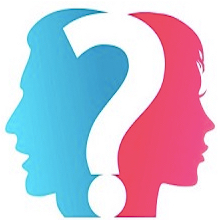 Check out our new audio program:
Check out our new audio program:
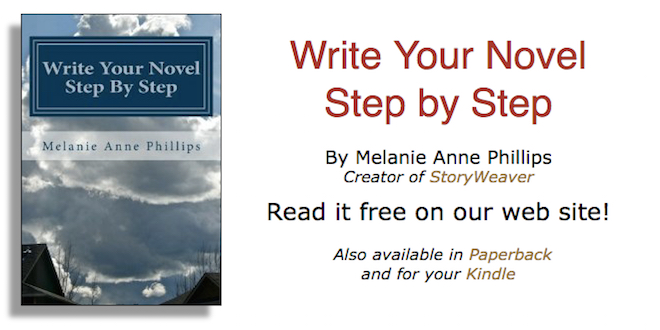
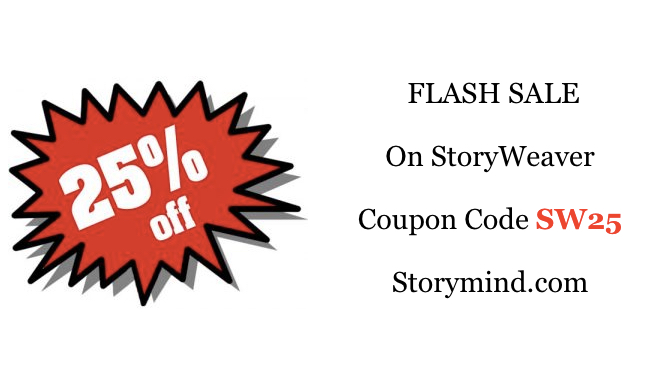
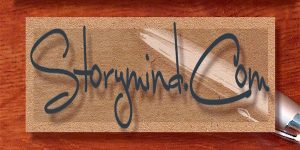 In this issue:
In this issue:
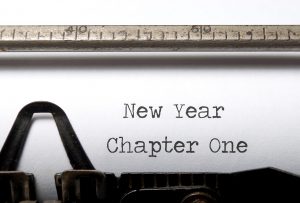 I’ve been teaching creative writing now for more that twenty-five years, and here are my best tips for starting your new writing year:
I’ve been teaching creative writing now for more that twenty-five years, and here are my best tips for starting your new writing year:
You must be logged in to post a comment.